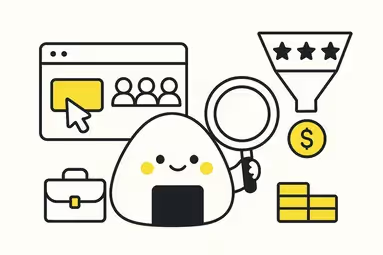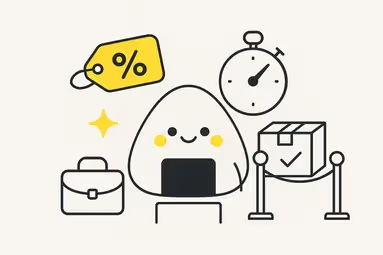.webp)
Imposter Syndrome? The 3 Rules of Product Management Networking
Stop networking passively. Learn the 3 crucial, long-term benefits of effective product management networking at industry events to boost your confidence and professional horizons.

The Hidden Value of Offline Product Community Events
In an age dominated by Slack channels and remote meetings, it's easy to assume that digital is enough. While online communities offer convenience, the lasting, high-impact career growth still happens when product professionals gather in person.
We fundamentally disagree with the notion that in-person collaboration is obsolete. In fact, seasoned product leaders consistently recognize that the strategic value derived from focused, face-to-face product management networking is irreplaceable.
Why is this essential? According to a LinkedIn study, nearly 80% of professionals consider networking vital for career success. Crucially, studies on business relationships show that nearly 100% of professionals believe face-to-face meetings build stronger, long-term relationships—the kind that lead to mentorship, opportunities, and strategic insights.
This is the power of a vibrant product community like Mind the Product, which started as a small London meetup and has grown into a global network. ProductPeople actively participates in this community, engaging in ProductTank events across various cities to share and gather knowledge. These engagements are not just speaking slots; they are essential platforms for collective growth and sharpening the craft of product management.
Here are the three powerful reasons why Product Leaders must prioritize engagement with their professional community.
1. Boost Your Confidence and Fight Imposter Syndrome
ProductTank and similar events are powerful energizers. They serve as a critical confidence boost, reinforcing your self-belief, especially during challenging cycles of product failure or organizational change. Seeing how other peers have tackled the same challenges you face can instantly inspire you to tackle your own.
Actionable Confidence Builders
Exposure to a diverse set of experiences helps dismantle the isolation that fuels imposter syndrome.
- Share Your Failures (Not Just Successes): Don’t hesitate to discuss challenges you’ve overcome. A key function of the product community is creating a safe space to normalize setbacks. Sharing a product launch that failed to gain product-market fit helps you feel understood and humanizes the often-stressful PM role.
- Seek and Provide Affirmation: Actively engage in conversations. Hearing success stories from others—and, just as importantly, sharing your own achievements—can reinforce your belief in your abilities and the value of your work on agile product development.
- Set Personalized Growth Goals: Use the inspiration from these sessions to set concrete, new professional goals. For example, learning about how a peer implemented OKRs for product teams could be your next focus area.
“Leadership relies on stable judgment. For PMs aspiring to Director roles, actively participating in a product community provides the psychological safety net and validation needed to maintain motivation, ensuring you lead with conviction rather than doubt.” — ProductPeople Expert Insight
Read Our Strategy to Use Failure as a Tool for Better Product Discovery
2. Expand Your Product Horizons with Cross-Industry Learning
Attending high-quality product events opens up new perspectives and introduces ideas that you simply won't encounter within the confines of your daily stand-ups and internal meetings. It’s not just about the ideas; it’s about the unique professional head that holds them.
💡 Why is in-person networking important for product managers?
In-person networking is important for product managers because it allows for high-quality, complex strategic thinking and accelerates trust-building, which is essential for effective stakeholder management. Unlike asynchronous digital communication, face-to-face interaction offers the ability to read subtle body language and engage in non-scripted, in-depth discussions. This environment facilitates the genuine exchange of product strategy frameworks and cross-industry learnings necessary for true innovation.
Applying Diverse Insights to Your Product Strategy
By exposing yourself to PMs from different industries, methodologies, and problem-solving approaches, you inspire fresh thinking and innovation that directly impacts your product roadmap planning.
- Listen to Diverse Voices: Pay attention to talks from professionals outside your industry—a PM from FinTech talking about regulatory compliance might offer a fresh lens on internal risk management in an EdTech context.
- Apply Cross-Industry Learnings: Consider how a strategy from another vertical could be adapted to your context. For instance, a proven customer research technique used in e-commerce might be revolutionary when applied to an internal tool or platform.
- Expand Your Vision: Be willing to experiment with new ideas. Learning about a novel product analytics tool or an improved product backlog management method can be the catalyst for a crucial process change in your own organization.
Join Mind the Product's Global Community and Events
Why In-Person Meetings Build Stronger Business Relationships (Forbes/HubSpot Data)
3. Master Product Management Networking and Mentorship
Seasoned product professionals quickly realize the truth: the most successful PMs are those who are active, generous contributors to the product community. This active engagement creates an environment ripe for collaborative learning and exchange, which is the fastest route to invaluable mentorship and business opportunities.
Building Your Advocacy and Opportunity Network
Connecting with product leaders provides access to the "hidden job market" and essential advocacy. A connection you meet today could be your champion, mentor, or hiring manager tomorrow.
- Offer and Seek Mentorship: Don’t hesitate to seek advice from more experienced Product Leaders—they are often flattered to be asked. Conversely, offering mentorship to newcomers sharpens your own leadership and communication skills, which are crucial for senior roles.
- Engage in High-Value Discussions: Move beyond surface-level exchanges. Ask open-ended questions about how leaders approached difficult trade-offs or handled a major organizational pivot. This demonstrates your commitment to product strategy over simple feature sets.
- Stay Open-Minded and Intentional: Networking should not feel like an opportunistic transaction. It should be a process of building authentic, long-term relationships where you are genuinely interested in exchanging ideas and supporting peers.
Research indicates that professionals with robust networks are more likely to land new job opportunities, receive mentorship, and access valuable resources. In fact, a significant number of professionals who earn six-figure salaries attribute that success to their professional network.
Mastering Stakeholder Management: Techniques for Product Managers
Ready to Accelerate Your Strategic Product Management Career?
The path to exceptional Product Management is paved with continuous learning and strategic connections. By actively engaging in your product community, you are investing in the most powerful catalyst for career growth: high-value product management networking.
Don't let your strategic development stall. Be intentional.
If your organization is ready to:
- Develop a culture of continuous learning and community engagement.
- Implement world-class frameworks for product strategy and execution.
- Train your team in high-impact stakeholder management and mentorship.
Contact Product People today for a consultation on our Product Strategy and Career Development services. We partner with product managers and CPOs to create the frameworks and competencies needed to build high-performing, strategically-minded product organizations.
FAQs
In-person networking is crucial because face-to-face interaction builds stronger, long-term relationships and accelerates trust-building—the kind that leads to high-impact career growth, mentorship, and strategic opportunities. Complex strategic thinking and genuine exchange of product strategy frameworks thrive in non-scripted, in-depth discussions.
Events like ProductTank serve as a critical confidence boost by dismantling the isolation that fuels Imposter Syndrome. Sharing failures, hearing how peers overcame similar product setbacks, and receiving affirmation normalizes the challenges of the PM role and reinforces belief in your abilities and the value of your work.
Cross-industry learning expands your product horizons and inspires fresh thinking. By listening to PMs from diverse verticals (e.g., FinTech, EdTech), you gain exposure to new problem-solving approaches, frameworks, and product analytics tools that can be adapted and applied to revolutionize your own product roadmap planning and strategy.
Strategic networking builds an Advocacy and Opportunity Network. Connecting with product leaders provides access to the "hidden job market," essential mentorship, and champions who can vouch for your readiness for senior roles. You become more likely to receive advice and land new job opportunities through these high-value relationships.
The best approach is to be intentional and authentic. Focus on building long-term relationships, not opportunistic transactions. Offer and seek mentorship, engage in high-value discussions about difficult trade-offs (not just surface-level feature talks), and become a generous contributor to the product community.
Read More Posts
.webp)
WSJF: Prioritize Features with Weighted Shortest Job
.webp)
Product Requirements Document: A Practical PRD Guide
.webp)
Acceptance Criteria: Write Clear Requirements Fast

Product-Led Growth: Is It Right for Your Company?

Black Friday Lessons for PMs: Ship Fast, Stay Sane



